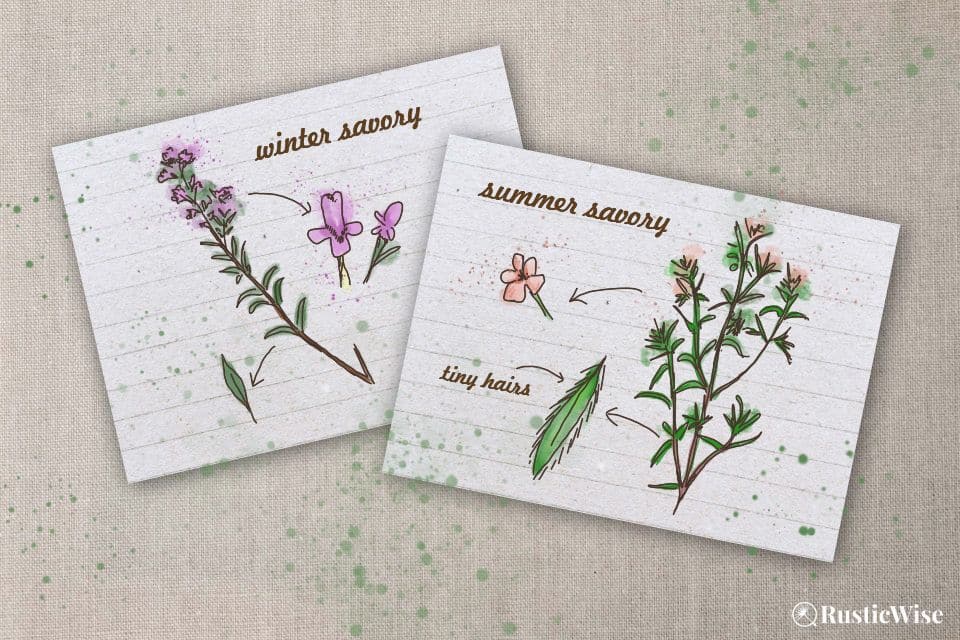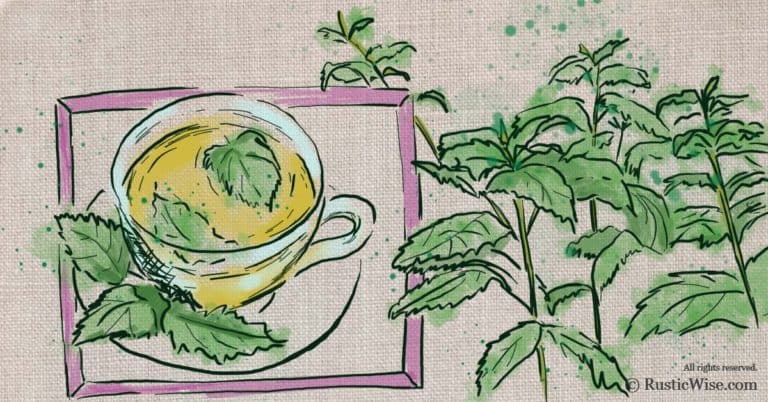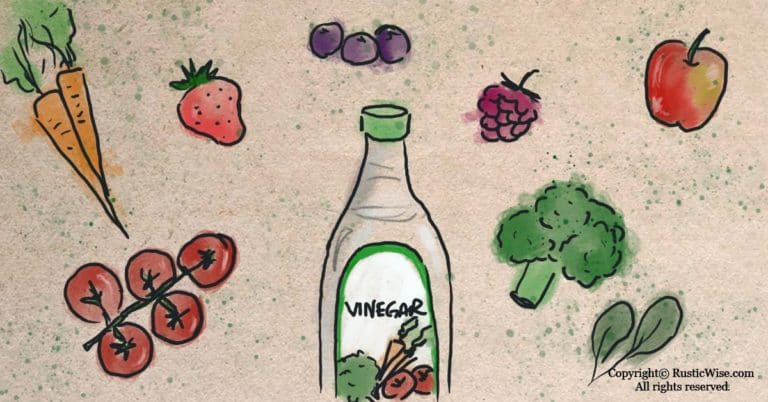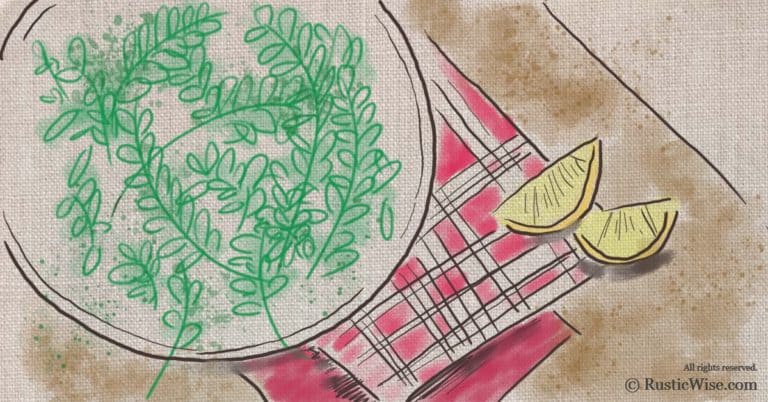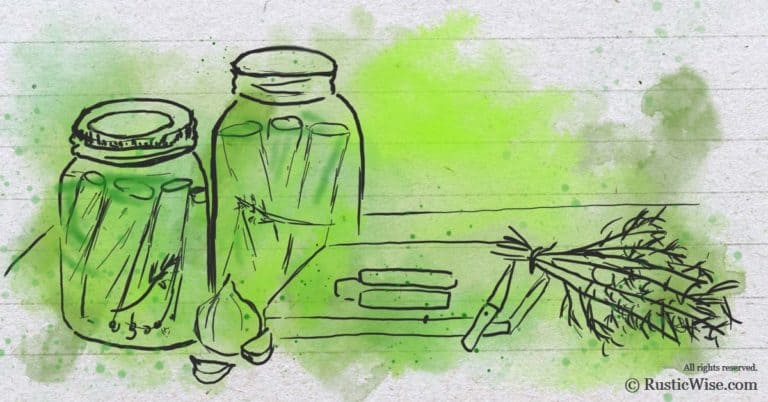Summer Savory vs Winter Savory: How These Aromatic Herbs Compare
Herbs and spices bring dishes to life with their unique flavors. Many herbs and spices steal the spotlight (ahem—dill, parsley, and black pepper!). If you’re looking to introduce a unique, yet versatile herb, the two basic types of savory are often overlooked.
While the herbs share many of the same qualities, there are key differences between summer savory vs winter savory. Summer savory is more commonly used for its milder flavor (similar to thyme). It’s an easy-to-grow annual plant. Winter savory has a more robust flavor with peppery notes and is a perennial.
The good news is that both summer and winter varieties can be used in much the same ways and are fairly interchangeable. Let’s take a deeper look at the similarities and differences between these two herbs and how to use them.
A closer look at savory: the plant and herb
Savory is a plant and herb belonging to the genus Satureja which falls under the mint family (Lamiaceae). There are roughly 30 types of aromatic herbs in the mint family.¹
You can find this plant growing natively throughout Asia, Europe, and North Africa.¹
The leaves and flowers of savory herbs are used to flavor many dishes, including poultry, meat, soups, stews, and stuffings. Aptly named, savory lends a unique earthy yet peppery flavor to savory dishes. You can often find this herb as an ingredient in seasoning mixes and herb bouquets.
The essential oil of this plant (1 percent of which the key component is carvacrol) gives the herb its warm, aromatic properties.¹
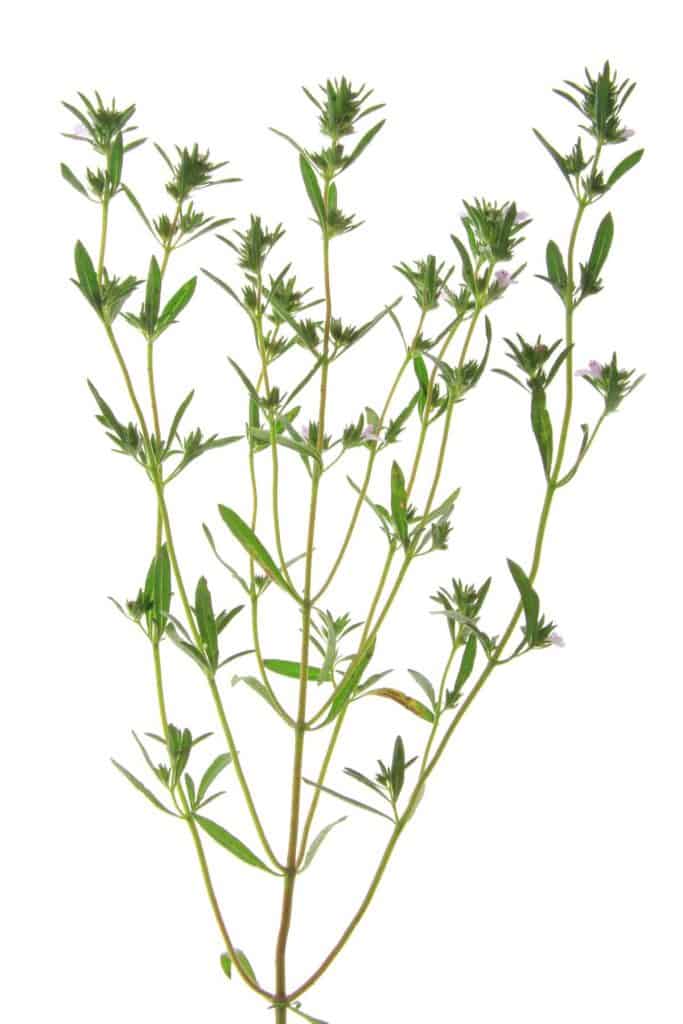
Credit: Yay Images
A closer look at summer savory
The more commonly used summer savory (Satureja hortensis), is a small annual shrub that grows well in warm zones.¹
It features square-shaped stems which are blanketed in tiny plant hairs (often tinted purple).¹
The greenish-gray summer savory leaves are linear and oppositely opposed. When in bloom, it produces white or pink flowers with two petals.¹
The taste of summer savory is sweeter and milder than its winter cousin.
Summer savory is a popular herb to grow, as it does well in pots and germinates easily.
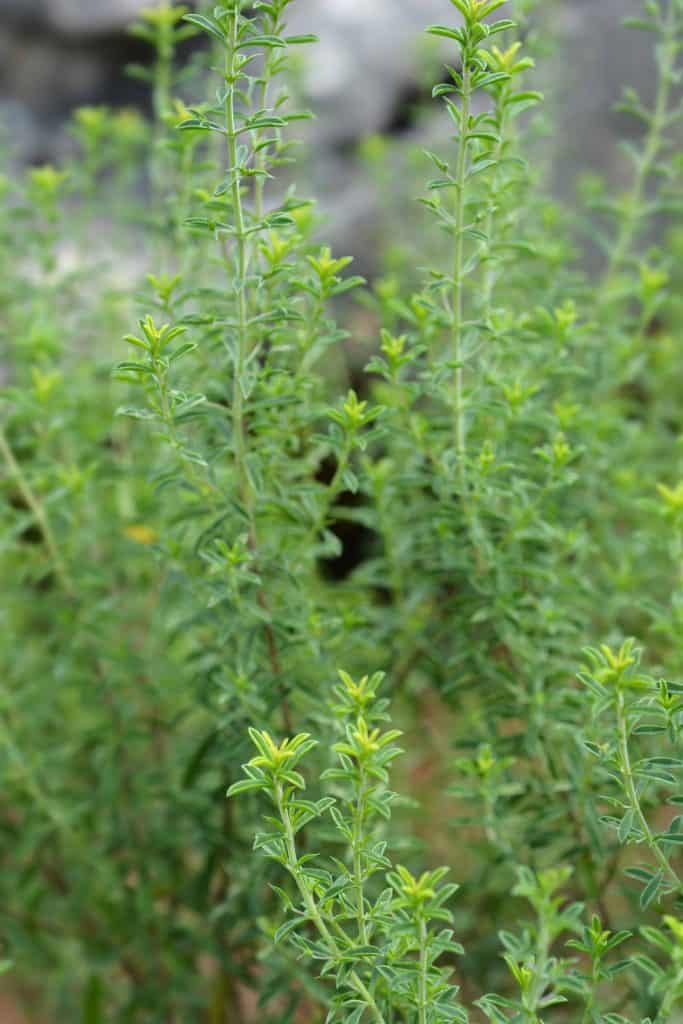
Credit: Yay Images
A closer look at winter savory
Winter savory is also called dwarf savory or mountain savory (Satureja montana). It’s a smaller perennial that produces lovely lavender, or pale pinkish-white flowers. It produces needle-like, dark green leaves.
It’s cold hardy up to 10 degrees Fahrenheit (-12 degrees Celsius) IF kept sheltered with mulch. ² We can find it growing in rocky areas of the Mediterranean region and other temperate regions.
The flavor of winter savory has a more potent and sharper flavor than the summer variety. It tastes like a slightly tangy, peppery version of marjoram with hints of pine.
Winter savory also does well in pots, but the seeds are harder to germinate. It’s easier to start via propagation.
Summer savory vs winter savory: key differences and similarities
Same, same, but different. Let’s take a quick look at how these two plants compare.
Gardening tip: Both summer and winter savory do well as companion herbs to beans. They help repel pests from bean plants and also attract pollinators and other wildlife.³
Table: A Comparison of Summer Savory vs Winter Savory
| Summer Savory | Winter Savory | |
|---|---|---|
| Latin name | Satureja hortensis | Satureja montana |
| USDA hardiness | Zones 5 to 9 | Zones 6 to 11 |
| Annual or perennial | Annual | Perennial |
| Appearance | Larger plant with light green leaves with white or pink flowers. | Smaller shrub with dark green leaves and lavender flowers. |
| Flavor profile | Sweeter and milder, with a taste that’s a cross between thyme and sage, and a dash of pepper. | Similar to summer variety, but more potent with hints of pine. |
| Culinary uses | Salad, soups, sauces, stuffings, fish, poultry, or meat dishes. Goes great with bean dishes. | Salad, soups, sauces, stuffings, fish, poultry, or meat dishes. Goes great with bean dishes. |
| Medicinal uses | Good for the digestive system and for taming flatulence. The whole plant has mild antiseptic properties. | Good for the digestive system and for taming flatulence. The whole plant has mild antiseptic properties.⁴ |
Savory herb substitute
Savory tastes like a cross between thyme and sage.
Tip: If you don’t have any savory on hand, try to make a close substitute by using 2 parts thyme to 1 part sage.
Summer savory is often used as a thyme replacement and can be used in similar ways to flavor beans, vegetable dishes, pork, lamb, stews, soups, and sauces.
Can you substitute winter savory for summer savory (and vice versa)?
Yes, you can use the two herb variations interchangeably. Just remember to compensate for winter savory’s stronger, more intense flavor profile. When replacing winter savory with summer savory, feel free to add a touch more than calls for in the recipe.
When substituting summer savory with winter savory, start with about half the amount as called for in the recipe, and adjust according to taste.
Herb blends with savory
Get creative and use this culinary herb to enhance a variety of cooked dishes.
- Beans (green): Beans and savory (both on the plate and in the herb garden) are a match made in heaven. Season your beans with equal parts basil, savory, and thyme.
- Beef: Add depth and dimension to beef dishes with equal parts basil, savory, and thyme.
- Italian blend: Add savory to the mix of the usual suspects found in Italian dishes, including basil, oregano, marjoram, sage, and thyme. This would be great for pasta sauces.
- Seafood and fish blend: Combine savory with fennel, sage, dill, and a splash of lemon juice, or lemon herb blend.
- Pork: Make a blend of equal parts basil, savory, and sage. You can also add a dash of allspice.
- Poultry: To season chicken dishes, mix equal parts savory, sage, thyme, rosemary, and marjoram.
When to harvest savory plant
To preserve the flavors of this herb when it’s at its peak, harvest the leaves when the plants are in flower.
For summer savory, the best time to harvest is generally in mid-summer. Winter savory can be harvested 2–3 times during the summer.
Air-dry the leaves outdoors in the shade, or bake at 110 degrees Fahrenheit (43 degrees Celsius) until crisp.²
Related questions
Can summer savory be used fresh?
Yes! A sprig of summer savory is great for adding depth to an omelet dish, or as part of a marinade for fish or poultry dishes.
You can also use fresh winter savory sprigs to garnish beans, salads, and stuffings.
What is the difference between ground savory and summer savory?
Most bottles of ground savory are made of the dried and finely ground leaves of the winter savory plant. Note that the winter savory plant has a similar flavor profile to that of the summer variety, just more intense. Both ground savory and summer savory taste like thyme with a peppery dash.
Does summer savory reseed itself?
Yes, while this aromatic herb will easily reseed itself, it’s best to replant each year as an annual.
Would you like more timeless tips via email?
Fun tips to help you live an independent, self-sustaining lifestyle. Opt-out at any time.


References
- Britannica, Savory, https://www.britannica.com/plant/Satureja#ref101642. Accessed June 2022.
- Emery, Carla (2012). The Encyclopedia of Country Living, 40th Anniversary Edition. Sasquatch Books. pp. 417-418. ISBN-13: 978-1-57061-840-6.
- Plants for a Future, Satureja hortensis, https://pfaf.org/user/Plant.aspx?LatinName=Satureja+hortensis. Accessed June 2022.
- Plants for a Future, Satureja montana, https://pfaf.org/user/Plant.aspx?LatinName=Satureja+montana. Accessed June 2022.

Author: Josh Tesolin
Josh is co-founder of RusticWise. When he’s not tinkering in the garden, or fixing something around the house, you can find him working on a vast array of random side projects.

